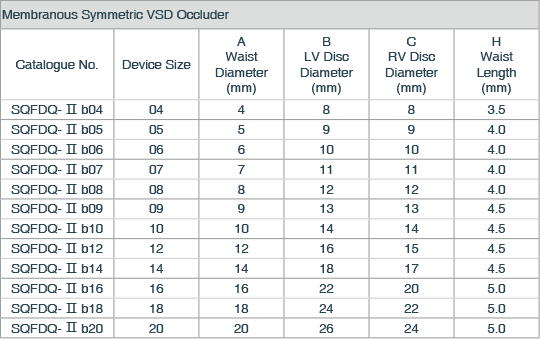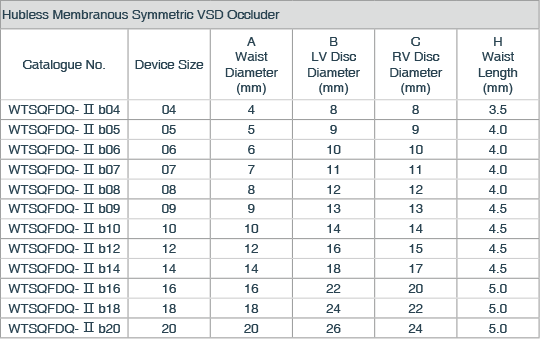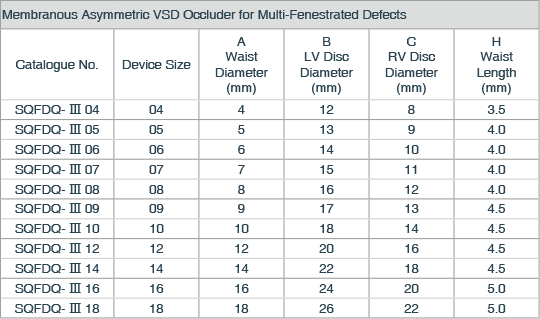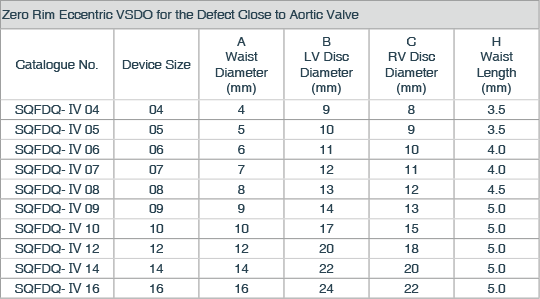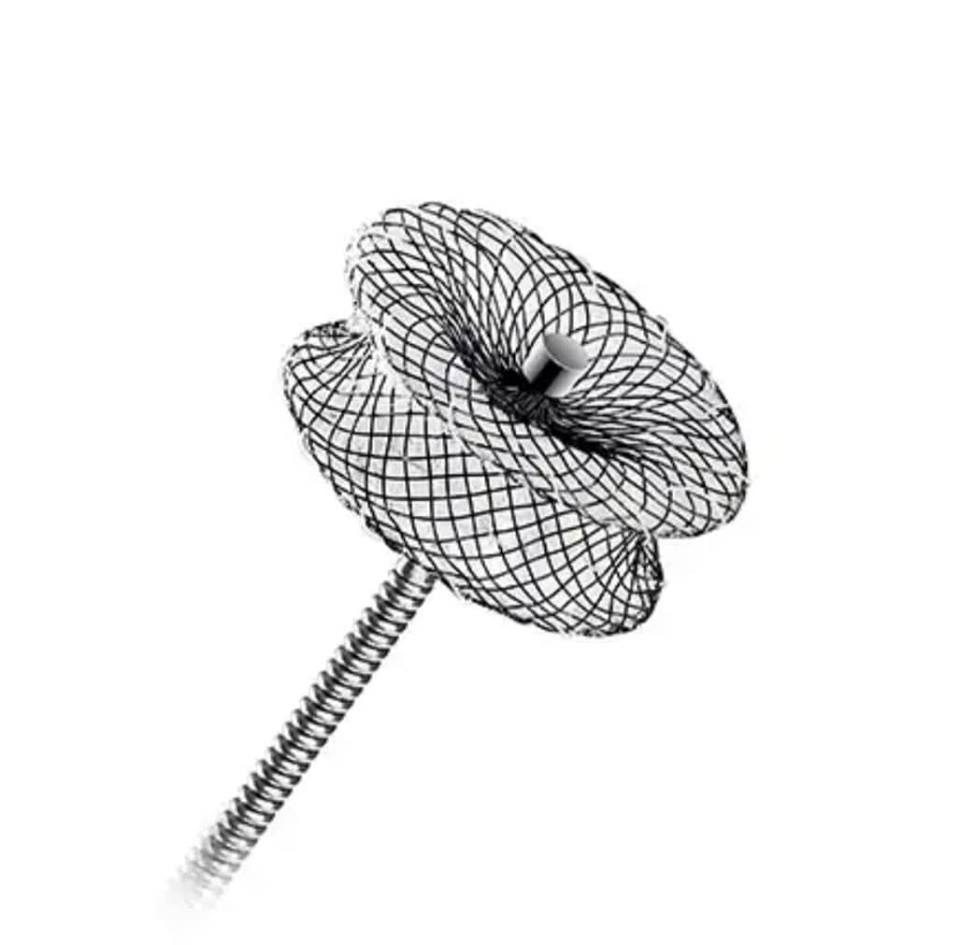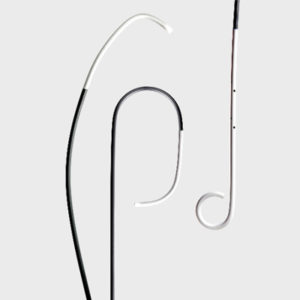Description
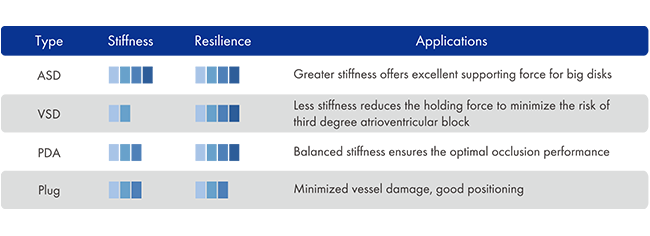
Structure
Special braided mesh structure provides excellent radial strength that ensures ideal configuration after deployment, allows of full cross-sectional orifice coverage, and minimizes operation risk.
Shape and Size
Complete range of occlude specifications can satisfy the most types and sizes of defects.
Safety Is What We Always Care About
Heat–Treated Nitinol Wire
Special oxidization process makes the compact and uniform surface of TiO2 on the nitinol wire. The oxidation surface effectively prevents from the release of nickel ion to guarantees great biocompatibility and long-term safety.
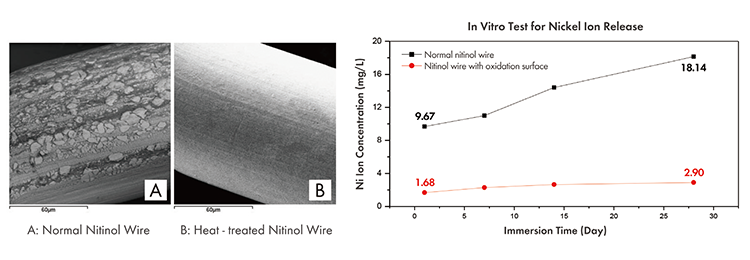
Physical Kneaded HubComparing to welded hub, the physical kneaded stainless steel hub is stable, durable and safe to avoid not only the change of nitinol wire’s physical properties, but also the release of harmful ions while welding.
Multiple Sizes of Waist Length for VSD Occluder
Instead of only one size of waist length, MemoPartTM VSD occluders provide 3-4 sizes of waist length to minimize the negative impact of compression force, which could highly reduce the risk of third degree atrioventricular block.
Hubless Occluders
The hubless design is available for most type of occluders to help with easier and better endothelialization.
Transcatheter Closure of pmVSD by Using the Modified MemoPartTM Occluder [1]
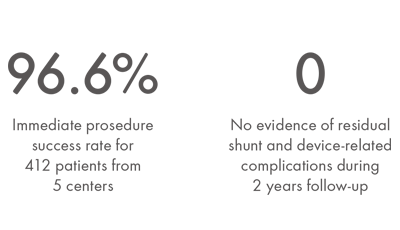
This multicenter study assessed the efficacy and safety of transcatheter closure of perimembranous VSD using MemoPartTM VSD occluders. In 5 different centers in China, 412 patients with VSD, including 202 men and 210 women. The immediate success rate was 96.6%. During the follow-up period of 2 years, there was no evidence of residual shunt and device-related complications.
Excellent Performance for Defect that Close to Aortic Valve < 2mmEfficacy: The major finding of this study was that in those defects with a rim towards the aortic valve < 2mm, which was previously considered not to be suitable for transcatheter closure, can be closed with the MemoPartTM Zero Rim Eccentric VSD Occluder.
Safety: One of the most serious problems in transcatheter closure of VSD is aortic regurgitation and perforation. For the eccentric VSD occluder, because there is no superior end of the device, there is distance between the aortic valvular annulus and the waist of the device that prevents aortic regurgitation after implantation of the device. And because of the asymmetric shape, the apical side of the left disk is relatively large and leans on the muscular septum to avoid dislodgement of the device.
Reduced cAVB RateIn our 398 successful cases, third degree atrioventricular block occurred in 6 cases, and recovered within 3 weeks. None needed an implantation of permanent pacemaker. The rate of cAVB was lower than most of the other studies.
One important reason is that the waist of MemoPartTM VSD occluder is longer than that of other brand occluder, so the strain of the septum might be smaller in our patients, which highly reduced the cAVB rate.
ORDERING INFORMATION


